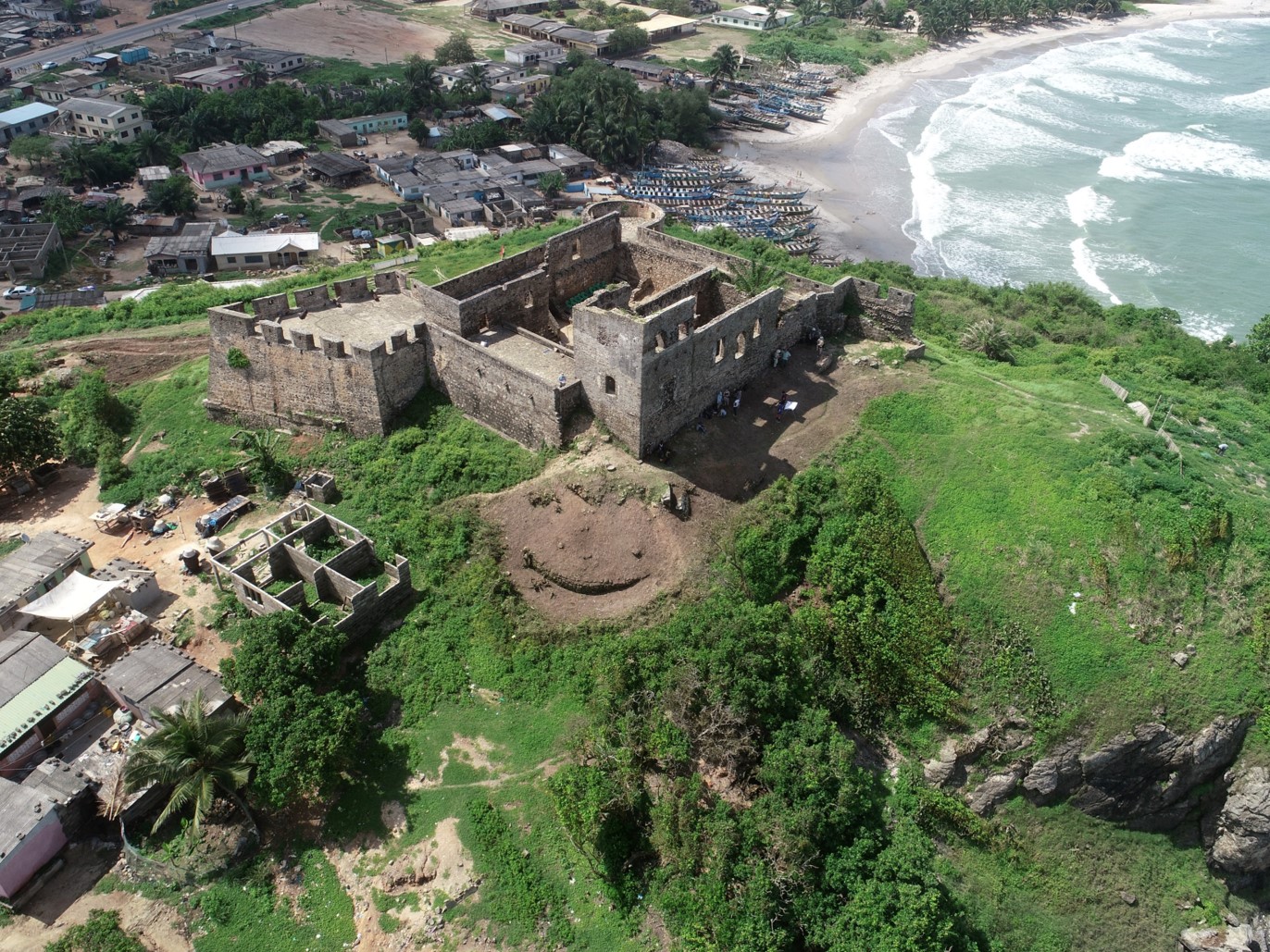UNEDITED!!!!!
A Note on Naming: Kormantin as a place name has been spelled numerous ways and has been applied to both “Great Kormantin,” an ancient hilltop town a quarter-mile inland from the Atlantic coast and “Little Kormantin,” also known as Cormantine (English) and Abandze (Fante). The African Diaspora name Coromantee derives from this location, although the connection between people in the Americas who call themselves Coromantee and the actual village of Kormantin is far from clear.
The history of Kormantin goes back at least six hundred years, when a community from the forested interior built a hilltop town slightly inland a quarter-mile from modern-day Abandze. They were already established when the Fante people settled around them a century later. The following timeline related the area’s complex, intertwined and international history, highlighting the interrelationship between local and global events in shaping the dynamic experiences of the Africans and Europeans who fought, traded, cohabited, and mutually made one of Ghana’s many gold- and slave-trade sites.
In 1632, the Company of Guynney and Binney built a trading base at Kormantin in coastal Ghana – England’s first outpost in Africa. Fortified and expanded, it served as English West Africa’s commercial headquarters until its capture by the Dutch in 1665, when it was renamed Fort Amsterdam. Kormantin is thus among the significant ‘firsts’ of Atlantic World, including sites such as Elmina (Ghana), La Isabela (Dominican Republic), Jamestown (Virginia), and others that played preeminent roles in cross-cultural encounters of the early modern world. England’s “Cormantine Castle” was among the first European West African emporia to send enslaved Africans to expanding European colonies in the Americas. The fort was designated a UNESCO World Heritage Site in 1972, becoming one of the first internationally recognized memorials to the Atlantic slave trade.
Kormantin has been around for at least six hundred years. Around 1400 people from the forested interior built a village on a hilltop a quarter mile inland from modern-day Abandze, Ghana. Fante people later arrived and settled around them. The area’s complex, intertwined, international history since then highlights interrelationships between local, regional, and global events that shaped the Africans and Europeans who fought, traded, cohabited, and sustained one of West Africa’s most significant historic sites.
Video Clip >> Map of Africa (Google Earth)- TEXT: “Between 1625 and 1825, British ships took more than 3.25 million Africans across the Atlantic to the Americas to begin lives spent in slavery and oppression.” – zoom in to Ghana, Kormantin area – “This is where Great Britain’s slave trade started.”
FADE TO BLACK
IMAGE: aerial of Fort Amsterdam, with beach village in the background.
“In August 1632, the English Guinea Company sent the Crispina to trade at the Gold Coast. England was a latecomer to West Africa – Portugal’s Elmina Castle was built in 1482 and a permanent Dutch base was established in 1612.”
“The Crispina arrived with trade goods worth £30,000. Its commanders, two experienced Dutch ex-West India Company traders, lavished presents on local Fante leaders and gained permission to build England’s first coastal trading post in West Africa at Kormantin – also written as Kromantse, Cormantine, .”
“From this base, English merchants traded for gold, sugar, and slaves all along the coast – as far away as Sao Thome and Benin.
“For the next thirty years, Kormantin was England’s commercial headquarters. The trading post was quickly fortified and became a magnet for interior Akan merchants, as well as a warehouse supplying English slave traders. Although few enslaved Africans passed through Kormantin itself, American-bound slaves were broadly called “Kormantine” or “Coromantee” by association.
After decades of competition, the Dutch West India Company besieged and captured Kormantin in 1665, after which England shifted its gold- and slave-trading headquarters to Cape Coast Castle. The Dutch rebuilt the English fort and renamed it Fort Amsterdam. It served as a satellite trade base directed from Elmina Castle until 1807 (CHECK), when an invading Ashante army captured and destroyed it.
Due to British and Dutch abolition of the African Slave Trade, Fort Amsterdam was never rebuilt and fell into ruin and its adjoining town became a fishing village. In 1973 it became a UNESCO World Heritage Site to bear witness to the wrongs of the Transatlantic African Slave Trade.
We invite you to explore and learn from this Place of Pain, an engine for moving countless coerced Africans from their homes to lives of slavery in the Americas.


